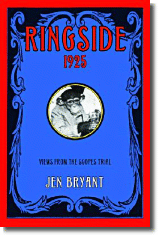We’ve had sales reps visiting our store almost every day for the past several weeks, most of them bringing along stacks of galleys to add to our ever-growing piles. The other day I boxed up all the ARCs of books that have already come into our store, save a handful I thought our booksellers might still be keen to read in galley form. I also cleared off a shelf that had previously held some display props, and only then did I have enough space in my office bookcase to house the galleys for titles coming out between now and August, of which there seem to be more and more each season.
Thinking some of you might need help visualizing this predicament, I took some photos so you could see for yourself. In the shot below is the (cheap) Ikea bookcase that is home to our children’s and YA galleys, sorted by month, so that I can easily remove old ones from the shelf in order to make room for new ones. (The ones I remove get donated to a local organization called Read Boston.) Ignore the top shelf (which on the left houses older galleys I still hope to read one of these days and on the right houses back issues of the Horn Book and various children’s literature reference books) — the shelves below those are all galleys for books being published between now and August (a handful at the end are September and October). Yes, there are a few we have multiple copies of, but those duplicates are offset by the fact that I also took a number of forthcoming galleys home to clutter up my bookcases there. AND some of our galeys have been borrowed by other booksellers and by the few kids who read and review ARC’s for us these days. AND there are a few publishers who don’t send us complete sets of their galleys, so not all of their books are here either.

Not too bad, you’re thinking? Well… I thought the same thing. When they’re lined up the impossibility of reading all those books somehow seems a bit less frightening. It’s deceptive. So I took another photo but staged things a bit differently for this one. I pulled all the galleys off the shelf that correspond with books being published only in the month of MAY, so that you can see how tall just that one month’s pile turns out to be. I even removed any duplicate galleys, so you couldn’t accuse me of cheating for effect.

(That’s a bit scarier looking, no?) For the sake of scale, I also took a (rather unflattering shot) of me, standing beside that May galley pile. Wearing shoes my height = 5′ 4.

There are about 60 galleys in that pile, which stretches out to approx. 4 feet of books coming out from predominantly large publishers in just ONE month this year. And, again, there are some galleys missing from that stack, so I’m certainly not accounting for everything.
Even the laziest bookseller in the least busy bookstore in the country STILL couldn’t possibly read all the books coming out in a given season nowadays. And those of us at the opposite end of the spectrum (which describes most of the booksellers I know) are lucky if we’re managing to make much more than a dent. Especially when it comes to months as jam-packed as this coming May!
































